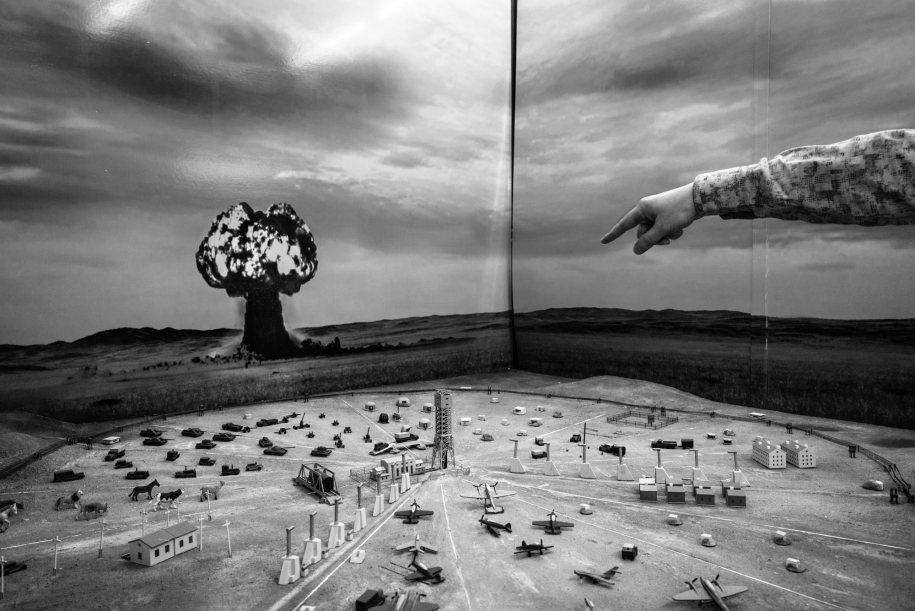

Kurchatov, Kazakhstan, February,
2023.
A replica of the Semipalatinsk nuclear testing site at the Institute of Radiation Protection and Ecology
museum. Within a 20 km radius of the blast site, buildings, armoured
vehicles, 50 aircraft and 1,500 cattle were positioned to study the impact of the explosion.
The test site covered an area of 18,500 square kilometres, but the
contamination was detected far beyond, encompassing an area of 300,000 square kilometres. Large
portions of the soil remain severely contaminated and untouchable for
the next 24,000 years. Towns such as Kurchatov, and notably Semey, which lies less than 100 kilometres
from the site, frequently experienced radioactive winds that led to recurring contamination.
As the world faces the danger of a new nuclear disaster because of the full-scale invasion of Ukraine, one dark chapter of the Cold War era still cast its haunting shadow over the remote steppes of Kazakhstan.
This region became the epicentre of Soviet nuclear testing during the Cold War, leaving behind a legacy of destruction and enduring consequences for generations. Beria, the NKWD leader of the Stalin era, was in charge of the nuclear weapons programme and declared the area 'uninhabited', but the test site was situated in Kazakhstan's industrial core, just 120 kilometres from Semey, with nearby towns within reach. Established in 1947, the Polygon became a secret laboratory for over 456 nuclear tests.
Thousands of inhabitants were used as guinea pigs.
Radiations and toxic fallout from the explosions contaminated the environment.
Tragically, the consequences of these activities were kept secret by the Soviet regime, depriving the population of knowledge and protection. Until today, despite the closure of the site in 1991, the people of Semey endured health issues, congenital disabilities, and a dramatic rise in cancer cases.
Make Comment/View Comments